
Abstract
The construction sector in Qatar has experienced a massive growth over the past three decades. As the country is plans to host the FIFA World Cup 2021, the demand in this sector has grown significantly. Construction companies are under immense pressure to complete and deliver their projects within tight schedule. In this paper, the focus was to investigate the impact of transactional and transformational leadership on employee performance in the construction sector in Qatar. Data was obtained from secondary sources to help in answering research questions.
A case study conducted revealed that both governance approaches are critical in enhancing organizational performance in this sector. Transactional leadership is critical when managing new employees and when tight schedules have to be met. It involves close supervision and coordination of employees. On the other hand, transformational leadership is important in long-term improvement of workers skills. It focuses on consistent improvement of skills of employees.
Introduction
Background
The concept of leadership has attracted the attention of many scholars who are keen on understanding how the performance of employees can be enhanced. According to Whittington and Regner (2019), the global society has gone through a significant transition since the time of industrial revolution. In the past, companies had immense power and used dictatorial governance approaches because their employees lacked alternative opportunities. However, that is no longer the case as talented workers can easily move from one employer to the other. It means that threats and punishment that were common during the industrial revolution can no longer work.
The need to motivate employees and ensure that their performance is enhanced is now more crucial that it has ever been in the past. Competition is getting increasingly stiff and companies have to ensure that they deliver the best products at the lowest cost possible. The management has to embrace effective leadership strategies that not only motivates workers but also ensures that lean operations is maintained. Harrison (2017) explains that after hiring and training a team of highly skilled and talented employees, the biggest challenge is to ensure that they remain motivated and are retained within the firm.
The level of competition and the pressure to deliver projects on time and as per the specification means that these firms must create a team of highly motivated and skilled employees. Liphadzi, Aigbavboa, and Thwala (2016) observes that in the construction sector, companies are often faced with numerous challenges that can easily inflate the overall cost of a project or lengthen the period within which it is completed. Any delays may result into a significant increase in the cost of the project. As such, a firm must ensure that every worker completes their assignment within the scheduled time as per the provided specification. They also have to coordinate their activities because when one team completes a given assignment, the next team is expected to take over. Communication is therefore a critical factor that defines success of such projects. Stakeholders in the construction industry have come to appreciate the significance of leadership in defining the performance of employees within the industry.
When one is entrusted with the role of guiding and directing others, they can use various leadership strategies. Transactional and transformational leaderships are some of the most common approaches that people use to govern others in a company setting. Transactional leadership emphasizes the need to organizing and closely supervise employees to ensure that they perform specific tasks within a given period and as per specific criteria (Lingard, Zhang, and Oswald, 2019).
It holds the assumption that people can only register impressive performance if they are closely monitored. On the other hand, transformational leadership focuses on inspiring, encouraging, and motivating employees to be creative, innovative, and able to embrace change as a way of achieving success (Liu and Chan, 2017). It holds the belief that people can register impressive performance with minimal supervision if they are properly inspired and motivated. In this study, the focus is to determine the impact of transactional and transformational leadership on employee performance, comparing the relevance of each style under different environmental settings.
Statement of the Problem
The construction sector has been booming in Qatar and the neighboring countries within the MENA region. Qatar is scheduled to host FIFA World Cup in the year 2022 and the first of its kind in the region, the government is working closely with private sectors to improve transport infrastructure, stadiums, hotels, and other facilities that will be needed by the visitors. Both local and foreign construction companies have witnessed a boom in their business because of the huge demand from government and private entities (Majumdar, Banerji, and Chakrabarti, 2018). As the demand continues to grow, so does the number of firms in this industry. As such, the existing firms are keen on ensuring that they deliver excellent results on projects that they undertake. The success of these companies depends on the performance of their employees.
The managements of firms in the construction sector have to find effective strategies of ensuring that their employees are effectively motivated to enhance their performance. Transactional and transformational strategies take different approaches to enhancing the performance of employees. While transactional leaders emphasize the need to closely supervise employees to ensure that they are doing what is expected of them, transformational leaders, on the other hand, believe that workers should be inspired and guided to ensure that they perform their tasks effectively. Mahmood, Uddin, and Fan (2019) believe that each of these leadership styles are appropriate under different settings. Successful leaders understand when it is the need to apply one of which when faced with various situations. Managers needs to understand when it is appropriate to embrace each of these leadership styles.
Rationale of the Study
Managing employees in the modern society is one of the most challenging tasks that companies face. The ease with which a talented individual can move from one company to another means that the task of retaining them is becoming ever more difficult. At the same time, a firm cannot create a relaxed environment primarily to make employees happy as a way of retaining them. Competition is becoming stiff, and customers are more demanding than ever before (Nzekwe, Adogbo, and Kolo 2017). It means that it is critical for a firm to find the best methods of improving the performance of employees without making them feel frustrated and unvalued.
Transactional and transformational leadership styles are some of the most effective styles of governing employees. Transformational leadership style has been praised as an effective governance approach in the 21st century. It creates an environment where employees are allowed to explore their potential and improve their performance by creating an innovating and supportive environment. However, Woolever (2019) warns that transformational leadership requires a strong organizational culture where employees understand their role and are committed to their work. As such, sometimes it may be necessary to use transactional leadership where the authority has to closely supervise the work of employees. Through this study, it will be possible to understand why and when each of these strategies is needed to ensure that employee performance is enhanced in this competitive construction industry.
Research Aim and Objectives
The researcher considered it necessary to define research aim and objectives to help determine the path that the study should take to achieve its goals. The aim of this study is to investigate the impact of transactional and transformational leadership on employees’ performance in the construction sector. The research will assess the effectiveness of each under different circumstances. The following are the specific objectives that will help in achieving the aim stated above:
- To determine the types of leadership style and behavior of managers in the construction sector
- To investigate the effects of the transactional and transformational leadership styles on the working environment
- To investigate the effect of transactional and transformational leadership styles on the employees’ performance
Research Questions
When conducting research, it is advisable to have research questions that guides the process of data collection. Having effective research questions helps in guiding the process of collecting data from various sources. The following is the primary research question:
- What are the effects of a manager’s transactional and transformational leadership behavior on the workplace environment and employees’ performance in the construction sector?
- How can transformational and transactional leadership styles be employed in the construction sector to enhance employee performance?
- What are the challenges of using each of the two leadership styles in the construction sector?
Dissertation Structure
The dissertation is structured in five chapters. The first chapter focuses on the background of the study. It explains the statement of the problem and the rationale of the investigation. Research aim, objectives, and questions are also outlined in this chapter. The second chapter focuses on the review of the literature. Transactional and transformational leadership styles are discussed extensively and their relevance in the construction sector defined.
The chapter also uses various theoretical models and concepts to explain the relevance of leadership models in enhancing the performance of employees. The third chapter discusses the methods used to collect and analyze data collected from the sampled participants. The chapter discusses the research philosophy and research approach used. Also explained in this chapter are the research design, data collection and analysis method, validity and reliability issues, ethical consideration, and limitations of the study. Chapter 4 presents the findings made from the analysis conducted as explained in chapter 3. The last chapter presents a summary of findings made, a conclusion, and recommendations.
Literature Review
The concept of leadership has attracted the attention of many scholars over the past several decades. Thomas (2017) explains that successful organizations have learned the significance of embracing effective leadership strategies as a way of ensuring that followers act in accordance with the vision and mission of the firm. They know that the performance of an individual depends on their level of motivation, commitment to the firm, the support they get from colleagues and superiors, and the skills that they gain while at work. In this chapter, the focus is to discuss what other scholars have found out in this field of knowledge in reference to the goal and objectives of the study.
Leadership in the Construction Industry
The construction sector in Qatar has been booming for the last 20 years. According to Zhang, Zheng, and Darko (2018), the government has been keen on diversifying its economy to reduce its reliance on oil and gas export. As such, sectors such as the real estate, transport, tourism, and trade have been receiving major financial boost from the government. Public-private partnerships (PPPs) have become common over that period as the stakeholders seek to work as a unit to enhance growth of the economy (Mekpor and Dartey-Baah, 2017).
The growth of these sectors of the economy relies on the construction industry. The real estate and the transport sectors have significantly contributed to the growth of the construction industry in the country. When Qatar won the bid to host FIFA World Cup 2022, the need to speed up and complete major construction projects increased significantly. New stadiums had to be put up and the current ones renovated to meet international standards. New hotels and recreational packs also had to be constructed to meet the expected influx of visitors.
The booming demand in the construction sector has attracted the local, regional, and international companies. Murphy (2019) explains that numerous construction firms from Europe, North America, and China have been actively involved in the construction sector in Qatar for the past decade. Unlike other industries, the construction sector is unique in terms of the need to meet strict deadlines and the consequences of failing to do so. Many firms find themselves under immense pressure to complete specific projects within the given duration.
The challenge that they face is that when some construction projects are hurried, there is always the risk of partial or total collapse. For instance, in July 2005, a wall in a construction site at Doha Corniche collapsed, killing two people and injuring many others (Whittington and Regner, 2019). It was a perfect demonstration of the dangers that can be posed to workers and members of the public when a construction project fails to meet the set standards. Such an undesirable eventuality not only has financial consequences but there is also the risk of human casualties. A delay on the other hand, may result in inflation of the cost, delay in starting to enjoy the benefits, or even a fine if that was included in the contract. There is also the risk of wastage during the construction process, which directly inflates the overall cost of production.
It means that construction companies must be ready to handle the pressure and deliver their projects as per the specifications and within the set timeline. Successful managers know that when working under such tight schedule, it is critical to have a team of employees who are not only skilled and talented at what they do but also motivated enough to ensure that they can deliver what is expected of them within that period (Nidadhavolu, 2021). Individual workers assigned specific tasks must understand their role perfectly and they also need to know how to coordinate their activities, from one team to the next. They have to avoid errors that may delay the project or lead to demolitions because of wrong interpretations of designs. They have to be willing to work under minimal supervision because of their desire to ensure that the project is a success.
Leadership plays a critical role in ensuring that such goals in the management of workers are achieved. According to Simmons, McCall, and Clegorne (2020), the amount of pressure that employees often face in the construction sector is often immense. They have to ensure that deadlines are met, but at the same time have to ensure they are safe and the work completed meets the set standards. It requires a high level of motivation that comes from those who are entrusted with the leadership. Instead of making workers to feel that they are in a prison setting, effective leaders have learned to use motivational strategies to enhance the performance of their workers (Saunders, Lewis, and Thornhill, 2019).
It involves creating an environment where employees feel that they are in control and that the leadership trust their capabilities. It also requires introduction of a healthy competition among workers by ensuring that efforts are rewarded. In such a healthy competitive environment, the ultimate goal that everyone should focus on is the success of the project, which means that unity and teamwork must be upheld at all times.
The strategy that the leader uses should discourage laziness, procrastination, and negative competition where one can deliberately sabotage a colleague for personal reasons. The challenge that leaders face is that sometimes it may not be easy to use a specific governance strategy at all times.
For instance, while transformational leadership strategy has been considered one of the best governance approaches in long-term human resource management, in some cases it is necessary to use hands-on approach, such as transactional leadership, when trying to achieve short-term objectives under a tight schedule. It means that a successful leader must understand when to change from one strategy to another, depending on the forces that have to be encountered within a given period.
Factors That Influence Effectiveness of Leadership in the Construction
The uniqueness of the construction sector, as discussed above, and the competitiveness of the industry require effective leadership for a firm to achieve success. Zuraik and Kelly (2019) believe that for a firm to achieve success in such an environment, its top management unit must understand how to handle its workforce to ensure they remain highly motivated and committed to the firm. A successful manager must understand specific factors that can directly or indirectly influence the effectiveness of their governance in the industry. This section of the report identifies specific factors that may affect the effectiveness of leadership.
Communication is one of the critical factors that define the effectiveness of leadership. Heldman and Mangano (2009) explain that a leader should be able to articulate concerns that they have and objectives they need to be achieved within a specific period. The message should reach the intended audience in its most original form to avoid misinterpretation and miscommunication. Open-door policy is increasingly gaining popularity as a way of ensuring that junior officers can also contact the top managers directly whenever they feel it is necessary to do so. Communication barriers within an organization should be eliminated to enhance effective sharing of information among colleagues and between the management and junior officers.
In the construction sector, leaders must learn how to build successful teams. Almost all tasks in a construction projects are done by teams of varying sizes (Clegg, Kornberger, and Pitsis, 2016). One team is expected to complete their assignment before handing over to the next team. The problem is that some employees do not thrive when they have to work in a team. It is the responsibility of the leader to ensure that such individuals are helped to overcome their personal fears and weaknesses when working in teams. Their concerns should be addressed and every member motivated to ensure that they are as supportive as possible. These teams must understand the goals and objectives that they have to achieve within a specific period and using the assigned resources.
Trust and personal accountability are critical for a leader in the construction sector to achieve success. Workers in the construction industry face immense risk in terms of occupational safety and health. A mistake in the design or implementation can lead to a major accident that can result in death or life-changing injuries (Kouzes and Posner, 2017). When workers are in constant fear when they are working, then their performance is compromised. They need to trust the design and the leadership of the firm to protect them from such accidents.
On the other hand, leaders have to trust their employees to remain accountable at all times, avoiding cases of pilferage and doing what is expected of them without unnecessary supervision. Everyone must realize that they have a responsibility to complete the project in time without giving in to the temptation of making unfair financial gains from the project at the expense of the sponsor or those who are expected to benefit from the project.
Flexibility is an essential attribute for a leader in the construction sector. Strategies and methods used in construction keep changing as modern technologies emerge. These new methods are meant to make the construction projects less costly and to shorten the time of their completion (Kouzes and Posner, 2017). New and better designs of constructions are also emerging. As a leader, one should be keen on understanding the emerging trends in the industry and be willing to change from one strategy to another as long as they are assured the cost of the project will not be inflated and the quality not compromised.
Effective leadership also requires some level of influence, which should not necessarily involve the use of coercive force. In the past, leaders would use their position to force their followers to act in a given way. The problem with this strategy is that most often employees would do as instructed because of the fear of losing their jobs. The strategy is no longer effective because talented and highly skilled workers can easily move from one company to the next. As such, effective leadership in this industry must involve the ability of a leader to communicate effectively and convince followers to embrace a given path to success. Instead of using threats, the leader must learn how to influence others by making them understand the benefits of that path, not only to the firm but also to them as part of the company.
Cultural Factors in Leadership
The leadership approach that a firm embrace depends on the cultural forces within that given environment. Northouse (2018) explains that cultural values and practices in the United States are significantly different from those in the MENA region. As such, a company must understand the immediate environment before defining its organizational culture. What Americans consider a normal practice may be strange for companies operating in Qatar.
Companies in the construction sector within the country must understand cultural values in this country when defining governance strategies. Although it is often advisable for a firm to be unique, one cannot ignore societal beliefs and practices. Hofstede’s cultural dimension theory has widely been used to define cultural practices and beliefs of people in different societies around the world. The theory identifies six dimensions that can be used to define the culture of a given society.
The first dimension focuses on power distance. According to Kouzes and Posner (2017), it defines the level to which inequality is tolerated in a country and the ease with which the less powerful in the society accepts their position. In the West, people tend to challenge power as they champion for equality in the socio-political and economic space. Democracy thrives in such environment. On the other hand, most of the MENA countries have a high-power distance and people embrace hierarchy. People tend to respect those in power and rarely considers challenging them (Wilton, 2019). A leader in the construction industry in Qatar can use this factor to ensure that they guide their followers towards a path of success. The knowledge that they will be respected gives them the opportunity to develop policies that can help the company to achieve tight goals.
The second dimension is individualism versus collectivism. In the West, individualistic tendencies are common, where people tend to focus on personal progress as opposed to trying to achieve communal growth. On the other hand, the society in Qatar favors collectivism (Whittington and Regner, 2019). People tend to focus more on programs that would result into communal growth and development. Leaders in the construction sector within the country can use this culture to promote teamwork when assigning employees tasks in various projects. They have to understand that the success of the construction project depends on their ability to work as a unit and to achieve tight deadlines within stipulated period.
Masculinity versus feminism is another major dimension in this model. In some societies, especially in the West, women empowerment has gained massive acceptance and they tend to enjoy the same rights as men (Kouzes and Posner, 2017). On the other hand, society where masculinity is stronger tend to favor men having positions of power. In Qatar, masculinity is still stronger although women have achieved both socio-economic and political freedom. In the construction sector, men tend to be the majority because of the physical demands of the job. As such, this cultural dimension will be favorable to construction companies in the country. They will be constantly reminded that the society expects more from them, which includes meeting tight deadlines at work. The culture makes it easy to motivate men because they believe they need to do more in every task assigned to them.
Uncertainty avoidance is a critical factor that defines the culture of people, as explained in this model. Some people tend to be risk-takers, always not keen on avoiding uncertainties (Dibb, Pride, and Ferrell, 2019). Such cultural practices are common in North America and Europe. Employees know that even if they lose their job, they can easily get hired in another company. As such, they do not fear taking risks. On the other hand, societies where risk avoidance is high, such as in Qatar, people tend to protect what they have and avoid taking unnecessary risks. This culture can help leaders in the construction sector where precision and the need to avoid wastage is high. It can help in ensuring that employees remain loyal to the firm and committed in completing their assignments within the set time frame.
The other important dimension that defines the culture of a given society is the long-term versus short-term orientation. In some societies, people tend to focus on long-term goals as opposed to short-term ones (Clegg, Kornberger, and Pitsis, 2016). They would rather suffer in the short-term if they are assured that in the long-term they will be successful. Qatar is such a society where people tend to focus on long-term goals. This culture is beneficial to leaders in the construction sector. They can easily convince workers to spend more time on specific assignments, complete them in time so that the project can be completed within the schedule. Such demands will not be strange to these workers because it is culturally acceptable.
The last dimension that can be used to define the culture of a society, according to this theory, is indulgence versus restraint. Kouzes and Posner (2017) observe that in the west, indulgence is a common practice where people prefer rewarding themselves and find it difficult to control their desires and impulses. The developed nature of these economies is an assurance to them that their future is always protected. In Qatar, restraint is the better definition of cultural practices and beliefs of the society. People tend to act with restraint although the country has one of the highest per capital income and the lowest unemployment rates in the world (Northouse, 2018). Leaders in the construction sector can take advantage of this cultural practice because they know employees cannot easily give in to their desires without considering the impact on other members of the society.
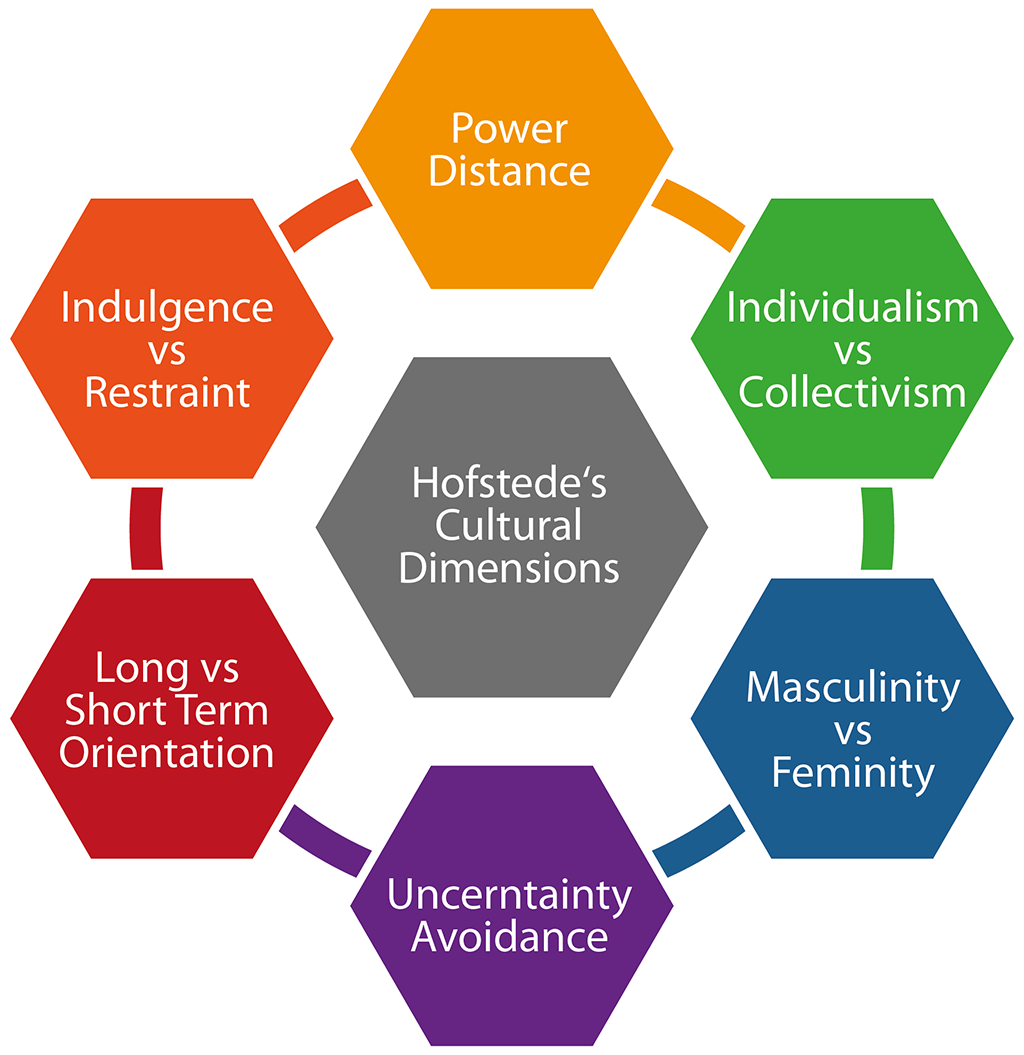
Theories of Leadership
Scholars have developed various theories to help explain the strategy that one can take to govern and their source of authority. As shown in figure 2.2 below, some of the common leadership theories include the great man theory, trait theory, behavioral theories, contingency theories, charismatic leadership theory, transactional leadership theory, and transformational leadership theory. Each of these theories are based on unique premises and define leadership from varying perspective. They can be useful for a leader when faced with different forces within the firm. In this study, the focus was on transactional and transformational leadership theories and their impact on employee performance within the construction sector.
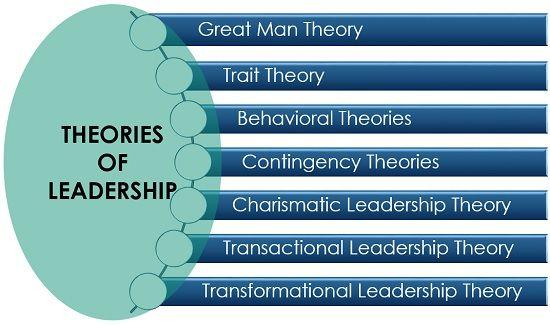
Transformational Leadership
Change is a factor that no firm can afford to ignore. Transformational leadership, as the name suggests, focuses on maintaining a dynamic system that allows a company to transform from one state to the next (Northouse, 2018). It seeks to identify the need for change, create a vision that would guide the process, create an inspiration for change, and execute the change process to realize specific goals. It has become one of the most effective leadership models in the modern society, especially when a company is operating in a highly dynamic industry. The model, shown in figure 2.3 below, is based on 4 I’s that define what a leader is expected of when they seek to achieve the change that they desire in an organization.
Inspirational motivation is one of the defining traits of a transformational leader. According to Simmons, McCall, and Clegorne (2020), such a leader must be capable of inspiring others to grow to new heights. Such a leader must learn not to use force but instead motivate subordinates to achieve greater levels of success. It involves making these employees to understand their current strengths and weaknesses. They must then focus on using their strengths to overcome the identified weaknesses. The leader must ensure that the subordinates are committed to personal excellence. That can only be achieved if these workers are made to understand the benefits that they will enjoy when the firm achieves its vision and mission.
Intellectual stimulation is another critical trait of a transformational leader. This approach of governance involves constant improvement of workers (Murphy, 2019). It means that they have to embrace learning as a way of enhancing their skills and capabilities. Intellectual stimulation involves making encouraging workers to enhance their education by pursuing further education and embracing on-job training. The leader must convince the subordinates of the benefits of furthering their education. They must also create an environment where these employees can easily acquire new skills. Thomas (2017) believes that such leaders should promote creativity and innovativeness among workers. The desire of the employees to remain innovative will motivate them to further their education.
The model identifies idealized influence as another important trait that a transformational leader should exhibit. In this case, the leader is expected to lead by example and set specific expectations among workers. Managers tend to issue instructions and expect their followers to observe them strictly (Simmons, McCall, and Clegorne, 2020). A transformational leader takes a completely different approach. They provide an example of what they expect of their subordinates by sometimes working alongside them. They become part of the workforce instead of being managers who simply issue directives. In such an environment, the leader can easily set expectations for the followers by demonstrating that it can be done. Employees can also get the opportunity to ask for clarification on specific issues that may not be clear to them.
Individualized consideration is the fourth element in this model of a transformational leader. Nidadhavolu (2021) argues that a transformational leader must be a coach, ready to help every employee to achieve their full potential. Instead of generalizing training processes, such a leader should start by understanding goals and expectations of employees. Every employee has unique needs, capabilities, and expectations. As a coach, the leader should understand the uniqueness of every employee and find ways of helping them to achieve their full potential. The strategy helps in making employees to feel that they are valued by those in managerial positions.
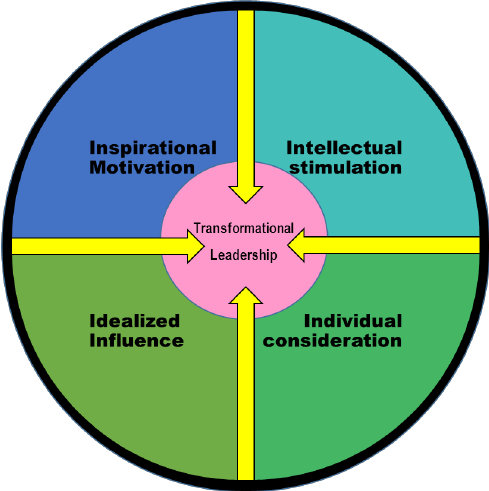
Transactional Leadership
Transactional leadership is another important theory of governance that has proven to be critical in the construction sector. It takes a dramatic shift from the strategies used in transformational leadership. As Nidadhavolu (2021) observes, transactional leadership primarily focuses on supervision, organization, and performance. It embraces the view that without proper supervision, some employees may not perform optimally, and that may have an overall negative impact on the performance of the company. It emphasizes on organization because of its significance in ensuring that everything is done the right way.
Such a leader is always keen on ensuring that everyone is assigned their right role and that they understand what is expected of them. Performance is the ultimate goal of a transactional leader. The aim is to ensure that employees register impressive performance using their available time. In the construction sector, this is one of the most effective leadership styles that one can use. With limited resources, including time, such a leader would ensure that major projects are completed as per the expectations and without delays or unnecessary inflation of costs. Just like transformational leadership, it also has specific attributes that defines it, as shown in figure 2.4.
Rewarding performance is one of the critical elements of transactional leadership. It holds the belief that those who register exceptional performance should be rewarded as a way of motivating them. By rewarding an employee, the leader will be passing a message that they are monitoring the performance of every employee and re committed to rewarding those who are of great value to the company (Farazmand, 2018). The model also shows that this strategy is effective when focusing on short-term goals. A transactional leader is always committed to achieving specific goals within a given period. It makes it one of the best strategies of governance in the construction sector where projects have to be completed within a specific time and using the assigned resources.
Transactional leadership is practical in nature. Instead of experimenting and trying new things, a transactional leader focuses on strategies that have been tried and tested. The leader expects the subordinates to follow specific instructions and deliver expected outcomes within the time available (Murphy, 2019). It also embraces a corporate structure. Eliyana, Ma’arif and Muzakki (2019) explain that a transactional leader is a typical manager. They expect subordinates to follow the laid structures and systems of communication and the chain of command. Instructions come from the top and subordinates are expected to follow them strictly. When they have a concern, they have to report to their immediate supervisor, who is then expected to pass the communication to their superiors.
The model shows that a transactional leader is less flexible. Grill et al. (2017) observe that these leaders are often focused on achieving short-term goals using limited resources. As such, they do not favor innovation that arise yet to be tested. They prefer following known paths to ensure that they use the assigned resources to complete specific tasks on time. The rigidity is meant to eliminate possible wastage of time and resources that may arise from mistakes of trying new strategies. It is also evident that transactional leadership relies on external motivation (Coetzer, Bussin, and Geldenhuys, 2017). Although it is less flexible in its approach, it is sensitive to external changes and their impact on projects being undertaken. As such, they can embrace change if it is unavoidable.
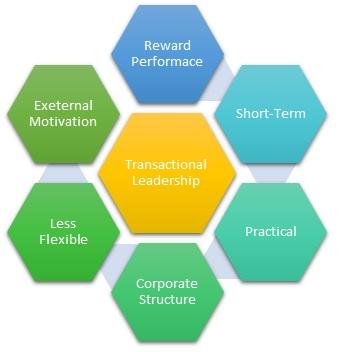
Leader-Member Exchange Theory
The leader-member exchange theory has gained massive popularity over the recent past. According to Whittington and Regner (2019), this theory, also known as the Vertical Dyad Linkage Theory or LMX, “explores how those in positions of power develop relationships with their team members and how those relationships can either contribute to growth or hold people back.” The manner in which a leader relates with their employees directly affect the overall performance in the organization. The theory defines the relationship between a leader and the subordinates in three stages, as shown in figure 2.5 below.
The first stage is defined as role-taking and it happens during the initial periods of interaction. The leader is expected to assess unique skills and capabilities of the members. It is at this stage that the opinion of the leader of each employee will be shaped. The second stage is defined as role-making, where every member will be expected to work on assignments given to them. They are also expected to blend with their colleagues to ensure that their teams are successful. The relationship between the manager and employees starts to take shape at this stage. It goes beyond the initial perception that had been developed by the leader. Routinization is the final stage where members are expected to respect the normal routines. Buil, Martínez and Matute (2019) explain that at this stage, respect, trust, patience, persistence, and empathy are critical attributes that the leader and employees must embrace to ensure that the relationship is successful.
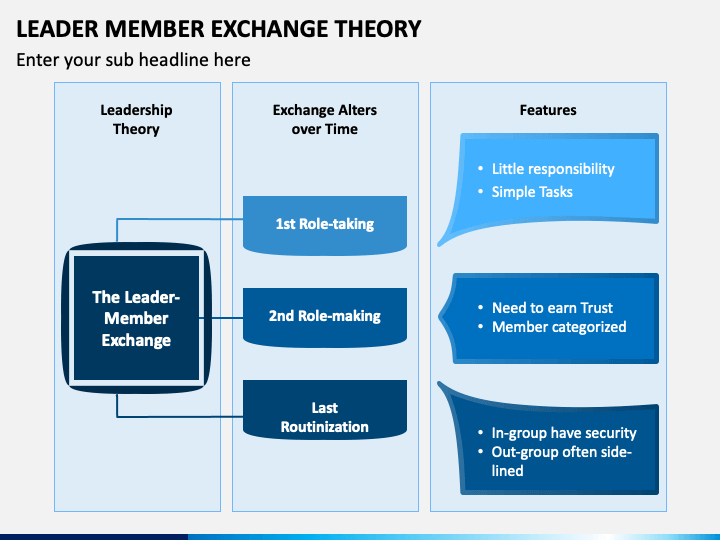
The concepts of this theory are relevant both to transformational and transactional leadership. According to Murphy (2019), irrespective of the leadership strategy that one embraces, the success of a company or an organization depends on the relationship between the governor and the governed. The leader must learn to inculcate a positive relationship that is based on mutual respect, trust, and commitment to the firm. These are virtues which are important both in transformational and transactional leadership. People need to understand their responsibilities and roles within their departments, and the need to ensure that their efforts reflect the goal of the firm.
In the construction sector, concepts of leader-member exchange theory are critical in defining the performance of employees. Al-Amin (2017) explains that in this sector, it is common to find cases where employees are expected to work for extra hours to meet tight schedules. The leader cannot force employees to work for such extra hours. It will depend on the relationship that has been inculcated, over a period, between the leader and followers to define the influence. When there is a mutual trust and respect, it is easy to convince workers to spend extra time on their duties, which will enhance the success of the project.
Methodology
The previous chapter focused on a review of the literature on the topic of leadership and how it affects employee performance in the construction industry. In this chapter, the focus is to discuss methods that were used to collect and process data obtained from various sources. Bell, Bryman, and Harley (2018) explain that it is important to define the method and strategies that was used in gathering data as a way of explaining the validity of the study. The chapter discusses the philosophy and research approach of the study, the qualitative research design that was used, and the data collection method. It also discusses the procedure used to analyze the primary data, validity and reliability issues, ethical considerations, and the limitations of the study.
Research Philosophy
When conducting research, one of the first steps that one should take is to define research philosophy. It helps in determining the assumptions that will be made in the study and the approach that has to be taken when developing the new knowledge. As shown in figure 3.1 below, one can use positivism, realism, interpretivism, or pragmatism as the appropriate research philosophy. It all depends on the nature of the study, objectives to be achieved, and the research questions to be answered. Positivism holds the view that trustworthy knowledge is gained through the observation, and involves measurements, which should then lead to a statistical analysis (Mukherjee, 2020). It holds that the role of the researcher should be limited to that of data collection and analysis. The philosophy is often popular when conducting quantitative research. It was considered less appropriate for the study.
Interpretivism is another popular research philosophy when conducting a social science research. It holds the assumption that access to knowledge and reality is only through social construction (Saunders, Lewis, and Thornhill, 2019). It values the integration of human interests in a given study. It allows the researcher to easily mingle with the participants in a way that allows data to be collected in a natural environment. It also emphasizes the need to use qualitative methods. It was considered a less appropriate philosophy for this study. Realism is another common philosophy, and it holds the view that reality is independent of human mind (Saunders, Lewis, and Thornhill, 2019). As such, it emphasizes the need to use scientific methods when developing knowledge. This philosophy was not appropriate for the study.
Pragmatic is another popular research philosophy in social sciences studies. It recognizes the fact that there are many ways of interpreting the work when conducting a study, and that no single view can give an entire picture of a given issue under investigation (Bell, Bryman, and Harley 2018). It holds the belief that there can be multiple realities and that a concept can only be considered relevant and true if it can support an action. When using this philosophy, a researcher is allowed the flexibility to take different approaches as long as the outcome of their study will support an action. It was considered the most appropriate philosophy for the study. It allows a researcher to use both qualitative and quantitative methods when processing data.

Research Approach
The research onion above shows that once an appropriate research philosophy has been identified, the next step is to select an appropriate research approach. The approach should be aligned with the assumptions of the selected philosophy. Inductive and deductive research approaches are the common reasoning methods that one can use in developing new knowledge. Deductive reasoning focuses on the development of a hypothesis that is based on existing theory, then developing a research strategy that will facilitate its testing (Mukherjee, 2020).
It is an effective approach when the focus is to explain the casual relationship between variables and concepts with the aim of generalizing research findings. As such, it is popular when conducting quantitative research methods. However, this approach was considered less appropriate for the study.
Inductive research reasoning takes an opposite approach to deductive reasoning. As Saunders, Lewis, and Thornhill (2019) explain, it starts with making observations and developing knowledge in the process. Theories may be used to justify findings made, but the researcher does not need to develop hypothesis at the beginning of the study. When investigating the impact of transformational and transactional leadership on employee performance, it was necessary to start by making observation without having a rigid pattern that has to be taken when developing knowledge.
This approach was also suitable because it allows one to use both qualitative and quantitative approaches to data analysis. Figure 3.2 below show the steps involved in inductive reasoning approach. It starts with making observations or conducting tests based on the primary research question. The researcher will then develop patterns based on the observations made. The final step is to develop a theory or a new knowledge that directly responds to the research question.
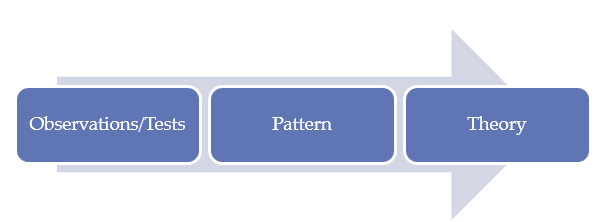
Qualitative Research Design
The research design that one selects should be in line with the philosophy and research approach. It should also be based on the research aim that has to be realized by the end of the study. Qualitative and explorative research design was considered the most appropriate design. According to Mukherjee (2020), qualitative research design makes it possible to give a detailed explanation of a phenomenon beyond the statistical analysis. When explaining the impact of transactional and transformational leadership on employees’ performance, it is important to describe in details the nature of the relationship. Qualitative analysis supports thematic analysis, which is essential in these study.
Case Study
The research onion in figure 3.1 above shows that a firm can use various strategies to collect data. They include experimentation, surveys, action research, grounded theory, ethnography, archival research, or case study. The strategy used depends on the nature of the study, time available to collect data, challenges that the researcher faces in collecting data, and preferences of the researcher. A survey had been considered an effective method of collecting data. It would allow the researcher to a sample a small team of participants to help in collecting the needed information. However, the researcher had to complete the project within 4 weeks. The time available was limited, and organizing an interview, especially with the current COVID-19 containment measures, was not easy. As such, it was decided that the most effective method of collecting detailed data within the short period would be through a case study.
Case studies are some of the most commonly used strategies when collecting data. Saunders, Lewis, and Thornhill (2019) explain that a case study is a methodology that enables a researcher to explore a phenomenon within a given perspective. It involves an in-depth, detailed, and up-close examination of a given phenomenon or case in a real-world context. The process involves identifying a phenomenon that is directly related to the issue under investigation or capable of explaining what is being investigated. One then needs to examine what happened, how it happened, why it did so, its impact, and ways in which it can be avoided in the future (if it was an undesirable event) or encouraged in case it was a pleasant experience. It involves exploratory and qualitative analysis of data.
In this case, the process involved the use of literature available on leadership theories, especially in relations to transactional and transformational leadership styles. Using the exploratory design, it was possible to explain the impact of leadership styles on the workplace environment and how it ultimately affected employee performance. The approach involved investigating specific cases when leaders of the selected institutions used either transformational or transactional leadership strategies. It involved determining how successful these leaders were in enhancing the performance of their subordinates while using these strategies. The goal was to explain how these leaders were able to transform their organizations using unique governance strategies while faced with many challenges.
The case study focused on the construction of Al Janoub Stadium and how these two leadership approaches were used to enhance its success. As Mukherjee (2020) observes, both transactional and transformational leadership strategies are highly effective approaches to governance. However, they are suitable under varying circumstances. Transactional leadership is more effective when a leader is keen on meeting specific goals within a short period of time hence a strict and hands-on management strategy is needed. On the other hand, transformational leadership is effective when trying to govern employees to improve their skills towards achieving a firm’s vision. The comparative analysis will focus on determining the appropriateness of each of these styles under varying circumstances.
The rationale for using this approach was the scarcity of secondary sources on this topic that mainly focuses on Qatar. The majority of the secondary sources (books and journal articles) available were published in the West, especially the United States and Western Europe. However, the researcher had to base the analysis in the context of Qatar. As such, the strategy was to use real case studies of how leaders of top companies in the country, especially in the construction sector, are using these two governance strategies to achieve their goals and visions of their organizations. It shed light on how these top executives are working with their subordinates to overcome challenges and meet tight deadlines set by their clients. Qualitative data analysis will be done using clusters to present themes effectively to help explain the impact of transactional and transformational leadership on employee performance.
Data Sources and Procedure
The goal of this study was to explain the impact of transformational and transactional leadership on employee performance. The researcher was interested in conducting interviews in government institutions and leading firms in the construction sector in the country. It would have helped in collecting current data and understanding the challenges and benefits of using each of these leadership strategies based on the experience of these leaders. However, the current COVID-19 pandemic made it impossible to take this approach.
The government, upon getting the advice from the World Health Organization and health experts locally and internationally, has given a directive that discourages physical interaction of persons. Limiting physical interaction is the best way of reducing the spread of the virus. It meant that data used in this study had to come from secondary sources.
The majority of the materials used in this study was obtained from online databases, while a few came from the home library. Some of the databases used to obtain the materials used in the study include Jstor, ProQuest Research, Sage Journals, Social Explorer, Springer Link, and Wiley Digital Archives. The search words and phrases used to obtain the materials included transformational leadership, transactional leadership, impact, and employee performance among others. Using these key words and phrases, the researcher was able to select the most appropriate peer-reviewed journals and books that addressed the issue under investigation. The researcher also obtained annual publications from specific companies, especially those that explained leadership strategies that they have been using in the country to enable them achieve their goals.
Validity and Reliability
When conducting a study, it is critical to ensure that issues about reliability and validity are protected. As Mukherjee (2020) observes, the document can be used by policy-makers to inform their decisions. Any misleading information may have devastating impact on policies and development projects initiated by the government. Future scholars may also use the document as a reference to inform their study. As such, it was essential to ensure that data presented in this project was accurate and reliable.
When using secondary data sources, as was the case in this study, the validity and reliability of data had to depend on the reliability of the secondary data sources used. First, instead of relying on one source, the researcher used multiple sources to inform this study. Peer-reviewed journals were considered more appropriate and valid sources. To ensure that information provided was current, the researcher limited the sources to those published within the past five years. Organizational publications were also considered effective, especially in explaining how a given entity was able to overcome challenges in their operations using specific governance strategies.
Ethical Considerations
The researcher had to observe ethical concerns when undertaking the study. Saunders, Lewis, and Thornhill (2019) explain that when collecting primary data, one of the principal requirements that have to be taken into consideration is the need to protect participants. It is often advisable to ensure that they remain anonymous to ensure that they are not subjected to criticism or attacks because of their opinion, which may be different from that of the majority or those in positions of power. In this study, data was collected from secondary sources, which meant that the need to protect the identity of the participants was not a major concern.
The researcher only needed to observe rules and regulations set by the school regarding academic malpractices. One of the main ethical factors observed was to ensure that the paper avoided all forms of plagiarism. Data was collected from secondary sources and the information was referenced effectively using the Harvard style. A list of all sources used was provided on the reference page. The researcher also made sure that the report was prepared and delivered within the timeline that had been provided by the school.
Limitations of the Study
It is important to note at this stage that the study faced some challenges. One of the main challenge was the limitations about physical interactions that the government has put in place to help reduce the spread of the coronavirus. These measures made it difficult for the researcher to conduct interviews with some of the top managers in the local construction industry. Although it was still possible to conduct online surveys, it would still be necessary to contact each of these participants and inform them about the online survey. These restrictions by the government made it difficult to have access to these contacts.
With the limited time available for the investigation, the researcher decided that the most effective and reliable way of collecting the needed data was through the use of secondary data. Using the most recent sources helped in addressing this challenge. It is also necessary to note that having access to peer-reviewed journals and books published in Qatar was a challenge. However, the researcher was able to find an adequate number of sources to help respond to the research questions and meet the objectives of the study. The final report was prepared in time and using reliable materials despite the challenges that the researcher faced.
Analysis
The previous chapter has explained the method that was used to collect and process data. In this chapter, the focus is to analyze and present findings to help in directly responding to the research questions. As explained in the previous chapter, the analysis involved the use of case study of the Al Janoub Stadium construction in Doha, Qatar. The analysis focused on addressing the following questions.
What are the effects of a manager’s transactional and transformational leadership behavior on the workplace environment and employees’ performance in the construction sector?
When analyzing the case of Al Janoub Stadium construction, it emerged that both transformational and transactional leadership strategies were used. The general contractor used transformational leadership to guide and motivate individual subcontractors to complete their tasks within the right time and using some of the emerging technologies (Adams, 2018). On the other hand, individual contractors (project managers) used transactional leadership to closely monitor and coordinate activities of their employees (Pintos, 2021). The goal was to ensure that they use standard practice to achieve the intended goal. Based on the LMX model discussed in the literature review, it is the responsibility of a leader to create trustworthiness in the workplace environment to enhance employees’ performance. It involves promoting mutual respect and honesty, building a cohesive community, serving others, and promoting justice. Figure 4.1 below identifies the values that a transactional and transformational leader should promote.
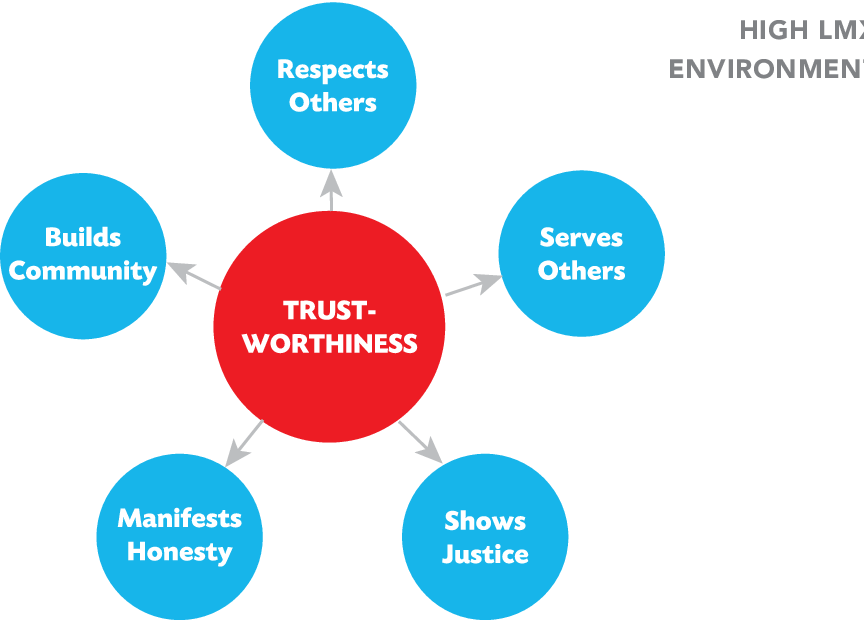
The case analysis of Al Janoub Stadium construction demonstrates that these values were upheald, leading to the success of the project.The general effect was that the project was completed in time and using the availed resources, as shown in table 4.1 below (Bhattacharyya and Jha, 2018). It created a conducive environment where there was mutual respect for everyone and tolerance to the workforce diversity.
Table 4.1. Al Janoub Stadium.
How can transformational and transactional leadership styles be employed in the construction sector to enhance employee performance?
Transformational and transactional leadership strategies have different principles, some of which may be contradictory. However, the case study shows that it is possible to employ both in the construction sector to enhance employee performance (Triandafyllidou, 2018). As shown in the case, transformational leadership can be used to foster long-term growth and development of employees’ skills.
On the other hand, transactional leadership can be used to when trying to achieve short-term goals that require close coordination and supervision of workers (Crane, Matten, and Glozer, 2019). Using both strategies can help in enhancing the success of a project, as was the case in the construction of Al Janoub Stadium. LMX theory helps in understanding how transactional and transformational leadership styles can help in enhancing employees’ performance in the construction sector. As shown in discussion in chapter 2, both leadership styles support high-quality LMX relationships based on employee satisfaction, high performance, commitment, and positive behavior. They factors leads to positive followers’ outcome, as shown in figure 4.2 below.
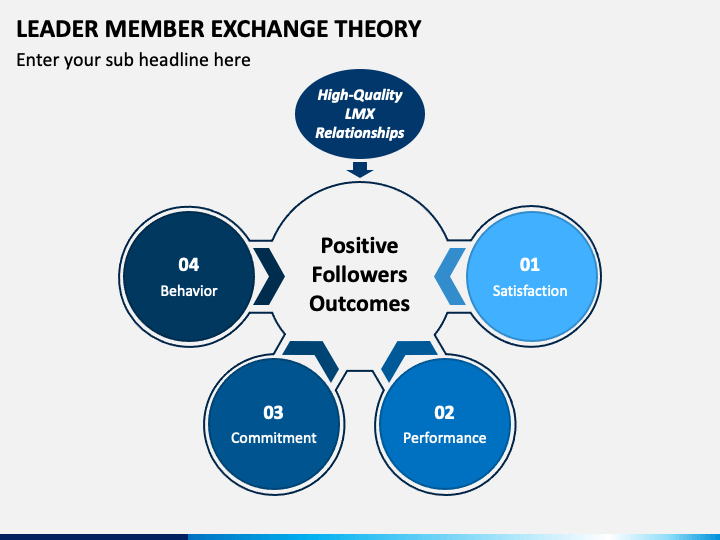
The case of Al Janoub Stadium construction shows demonstrates the impact of the strategy on a project’s success. Figure 4.1 below shows the construction site of the stadium, while figure 4.2 shows the stadium upon completion. As Franco (2020) observes, it is critical to know when to use each of these two governance strategies.


What are the challenges of using each of the two leadership styles in the construction sector?
It was necessary to identify some of the challenges of using these two leadership styles in the construction sector. In the case study of Al Janoub Stadium construction, the biggest challenge of transformational leadership is that it requires time (Triandafyllidou, 2018). As such, it is not an effective strategy when handling short-term projects. It also relies heavily on trust and motivation of employees. On the other hand, transactional leadership ignores creativity and innovativeness of workers (Antoniou, Cooper, and Gatrell, 2019). It overemphasizes on the need to complete tasks within a specific period using standard practices. As such, employees are discouraged from trying new strategies undertaking their tasks. It also viewed as being an authoritarian approach of governance, a strategy that many people dislike (Singh and Ramdeo, 2020). As such, using a blend of the two strategies is strongly encouraged. It helped in completing the project successfully and as per the desired design, as shown in figure 4.3 below.

Conclusion and Recommendations
Transactional and transformational leadership are some of the most common governance strategies, which have gained massive impact in the past few decades. Transactional leadership emphasizes the need to maintain regular supervision of activities of employees as a way of ensuring that they complete assigned tasks within a specific time and using allocated resources. It holds the belief that maintaining close supervision and coordination of employees is the best way of ensuring that they perform optimally. Transformational leadership, on the other hand, focuses on motivating and guiding workers to ensure that they achieve their full potential. It holds the belief that everyone has a desire to perform optimally when offered the right environment. As such, these leaders focus more on empowering employees and enhancing their skills instead of constantly monitoring their performance.
Using these two leadership strategies is essential in the construction industry. As shown in the review of the literature and the analysis chapters, the construction sector in Qatar has experienced massive growth over the past three decades. When the country won the bid to host the FIFA World Cup in 2022, there was a sudden pressure by the government and private sectors to put in place systems and structures to accommodate the tournament and visitors. The government has been renovating and constructing new stadiums, especially in the city of Doha. Roads and other systems of transport are also getting improvement.
Construction companies are under immense pressure to ensure that they complete their projects in time and as per the specifications. The analysis presents a case study of the construction project of Al Janoub Stadium. The analysis shows how the management used both transactional and transformational leadership strategies to ensure that the project was completed within the stipulated time and using the availed resources. The general contractor had to work with several subcontractors to ensure that specific tasks were completed at the right time. The analysis show that the general contractor used transformational leadership style to govern workers, always encouraging them to explore their potentials beyond what they believe was possible. The general manager maintained close communication with project managers of individual subcontracted companies to monitor the progress and to advise them accordingly whenever it was necessary. On the other hand, individual project managers used transactional leadership strategies to ensure that their individual workers were closely supervised.
Using these two governance strategies has proven to be an effective way of managing construction projects. A significant number of these construction companies are foreign firms, especially from the Far East, Europe, and North America. Their leaders have unique experience of using these two strategies of leadership whenever it is necessary. Local leaders have also gained knowledge about these governance strategies. As such, most of the construction projects meant for the 2021 FIFA World Cup have been completed successfully within the right time and as per expectations. However, the following recommendations may help in improving specific issues that were identified:
- It is necessary to train locals, especially those who hold supervisory positions, on the significance and principles of both transactional and transformational leadership;
- It is advisable to use transformational leadership when governing highly-skilled and self-motivated employees while transactional leadership should be used when governing new workers in an organization.
- A leader should understand the needs, expectations, and capabilities of the subordinates before choosing the most appropriate governance approach that should be applied;
- When using either transformational or transactional leadership strategy, it is critical to maintain effective communication between the leaders and subordinates.
Reflection
The topic that was chosen for this study was enjoyable and it allowed me to compare two of the most popular styles of leadership in the modern century. Transactional leadership has been considered as one of the most effective governance strategies that focuses on empowering subordinates as a way of enhancing their performance instead of using coercion. On the other hand, transactional leadership focuses on guiding workers to achieve specific goals within a strict schedule. During the research, I noticed that the ability of a leader to succeed depends on their ability to use these two strategies at different times to enable them achieve the desired goals. I noticed that although transactional leadership is a more common governance approach when undertaking specific projects, these organizations are using transformational leadership in the overall management of their employees.
When conducting this investigation, I noticed that there are some potential opportunities to explore, and I intend to conduct further studies as part of my future PhD program. One of the issues that I intend to focus on in the future is determining the level of awareness of these governance styles among local managers in the construction sector. I noticed that some of these local managers are using these strategies without even understanding their principles effectively. I believe that when they understand these governance approaches, they can become better leaders, especially when operating in a highly competitive environment. In my future studies, I intend to collect primary data from a sample of participants, something I was not able to do when conducting this study. It will help in understanding the views of both leaders and subordinates about the effectiveness of these governance strategies.
Reference List
Adams, D. (2018). Mastering theories of educational leadership and management. Kuala Lumpur: University of Malaya Press.
Al-Amin, A. (2017). ‘Transformational leadership and employee performance mediating effect of employee engagement’. North South Business Review, 7(2), pp. 28-40.
Antoniou, A., Cooper, C. and Gatrell, C. (2019). Women, business and leadership: gender and organisations. Northampton: Edward Elgar Publishing.
Bhattacharyya, S. and Jha, S. (2018). Strategic leadership models and theories: Indian perspectives. London: Emerald Publishing.
Buil, I., Martínez, E. and Matute, J. (2019). ‘Transformational leadership and employee performance: the role of identification, engagement and proactive personality’, International Journal of Hospitality Management, 77, pp. 64-75.
Coetzer, M., Bussin, M. and Geldenhuys, M. (2017) ‘Servant leadership and work-related well-being in a construction company’. SA Journal of Industrial Psychology, 43, pp. 1-10. Web.
Crane, A., Matten, D. and Glozer, S. (2019). Business ethics: managing corporate citizenship and sustainability in the age of globalization. Oxford: Oxford University Press.
Dessoy, P. (2021). Al Janoub Stadium: the first exploits of the 2022 World Cup. Web.
Eliyana, A., Ma’arif, S. and Muzakki (2019). ‘Job satisfaction and organizational commitment effect in the transformational leadership towards employee performance’. European Research on Management and Business Economics, 25(3), pp. 144-150.
Farazmand, A. (2018). Global encyclopedia of public administration, public policy, and governance. Cham: Springer.
Franco, M. (2020) Digital leadership: a new leadership style for the 21st century. London: IntechOpen.
Grill, M. et al. (2017). ‘Safety leadership at construction sites: the importance of rule-oriented and participative leadership’, Scandinavian Journal of Work, Environment & Health, 43(4), 375-384.
Harrison, C. (2017). Leadership theory and research. Hamilton: Palgrave-McMillan.
Lawrence Nzekwe, K. C., Adogbo, K. J. and Kolo, B. A. (2017). ‘Assessment of organisational leadership for knowledge management practice in the Nigerian construction industry’. Journal of Construction Project Management and Innovation, 7(1), pp. 15-25.
Lingard, H., Zhang, R.P. and Oswald, D. (2019). ‘Effect of leadership and communication practices on the safety climate and behaviour of construction workgroups’. Engineering, Construction and Architectural Management, 26(6), pp. 886-906.
Liphadzi, M., Aigbavboa, C. and Thwala, W. (2016) Leadership styles of construction project leaders – a theoretical perspective. (Online).
Liu, A. and Chan, I. (2017) ‘Understanding the interplay of organizational climate and leadership in construction innovation’, Journal of Management in Engineering, 33(5), p. 04017021.
Mahmood, M., Uddin, M.A. and Fan, L. (2019) ‘The influence of transformational leadership on employees’ creative process engagement: a multi-level analysis’, Management Decision, 57(3), pp. 741-764.
Majumdar, D., Banerji, P. K. and Chakrabarti, S. (2018) ‘Disruptive technology and disruptive innovation: ignore at your peril’, Technology Analysis & Strategic Management, 30(11), pp. 1247-1255.
Mekpor, B. and Dartey-Baah, K. (2017) ‘Leadership styles and employees’ voluntary work behaviors in the Ghanaian banking sector’, Leadership & Organization Development Journal, 38(1), pp. 74-88.
Mukherjee, S. (2020). A guide to research methodology: an overview of research problems, tasks and methods. New York, NY: CRC Press.
Murphy, M. (2019). Leadership styles: how to discover and leverage yours. London: Leadership IQ Press.
Nidadhavolu, A. (2021) Impact of leadership styles on employee job satisfaction and organizational commitment – a study in the construction sector in India. Master’s Thesis. School of Engineering and Applied Sciences.
Pintos, P. (2021) Al Janoub Stadium: Zaha Hadid Architects. Web.
Saunders, M. Lewis, P. and Thornhill, A. (2019). Research methods for business students. 8th edn. London: Pearson.
Simmons, D., McCall, C. and Clegorne, N. (2020) ‘Leadership competencies for construction professionals as identified by construction industry executives’, Journal of Construction Engineering and Management, 146(9), p. 04020109.
Singh, R. and Ramdeo, S. (2020) Leading organizational development and change: principles and contextual perspectives. Cham: Palgrave Macmillan.
Thomas, N. (2017) ‘Transformational leadership and performance outcomes: analyses of multiple mediation pathway’, The Leadership Quarterly, 28(3), pp. 385-417.
Triandafyllidou, A. (2018) Handbook of migration and globalisation. Cheltenham: Edward Elgar Publishing.
Qian, J, et al. (2017) Ethical leadership, leader-member exchange and feedback seeking: a double-moderated mediation model of emotional intelligence and work-unit structure. Frontiers in Psychology, 3(11), pp. 12-25.
Zhang, Y., Zheng, J. and Darko, A. (2018) ‘How does transformational leadership promote innovation in construction? The mediating role of innovation climate and the multilevel moderation role of project requirements’, Sustainability, 10, pp. 2-19.
Zuraik, A. and Kelly, L. (2019) ‘The role of CEO transformational leadership and innovation climate in exploration and exploitation’, European Journal of Innovation Management, 22(1), pp. 84-104.
